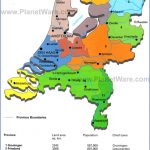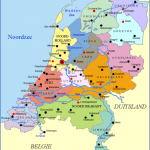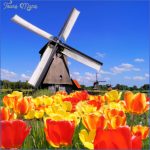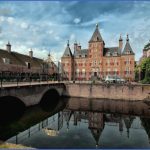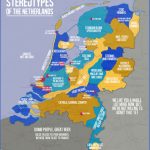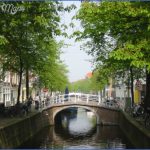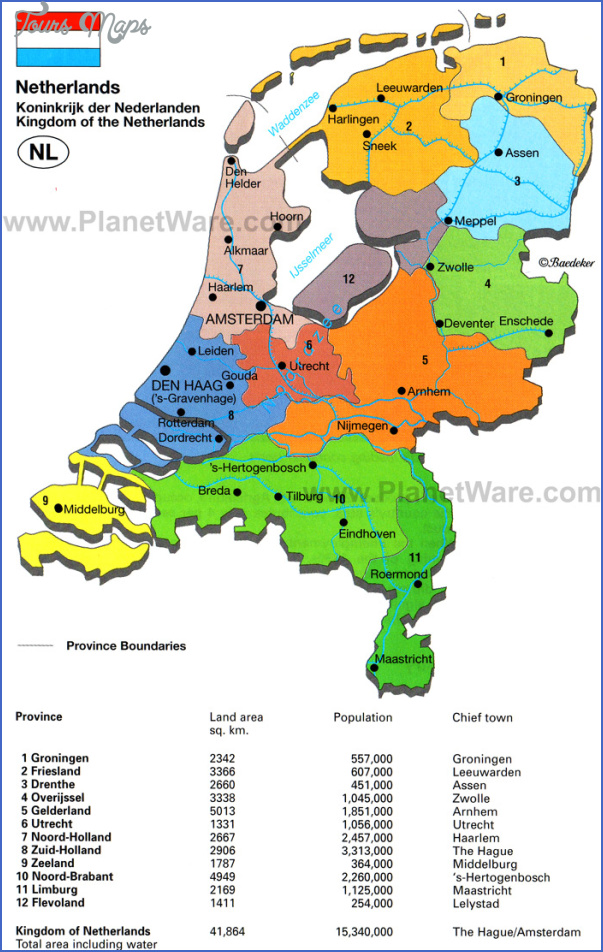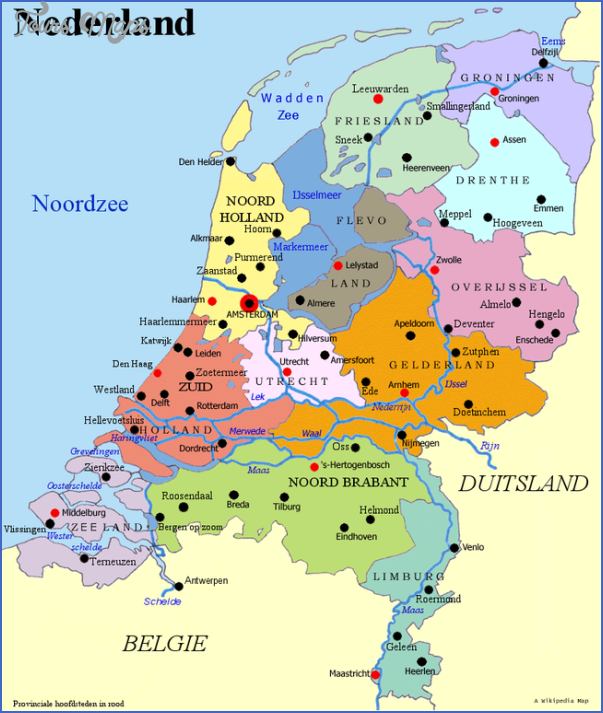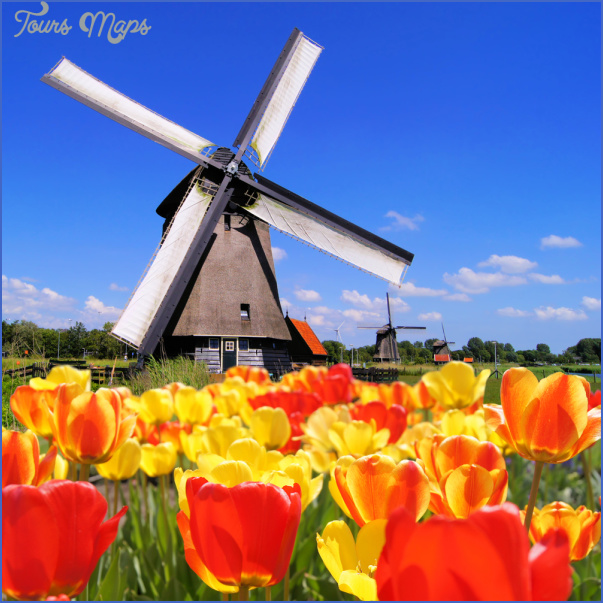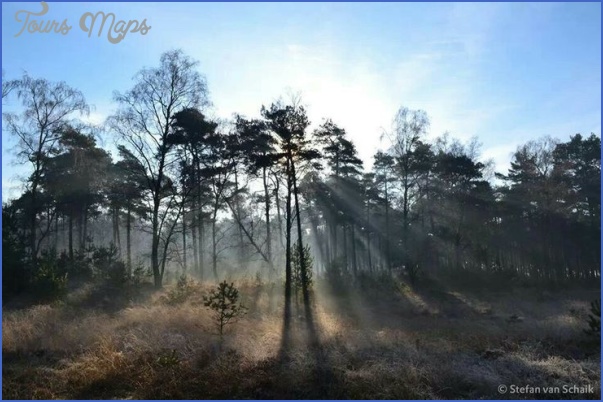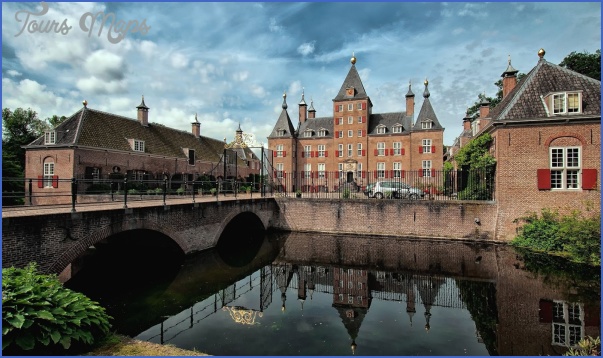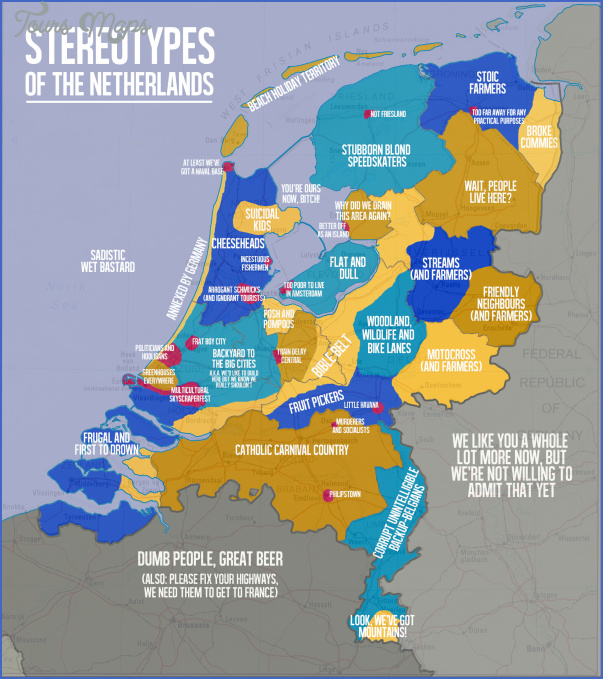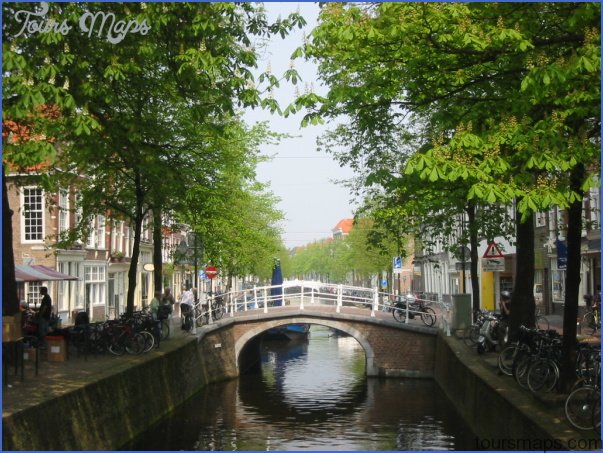THE NETHERLANDS (NEDERLAND)
The Dutch say that although God created the rest of the world, they created The Netherlands. The country is a masterful feat of engineering; since most of it is below sea level, vigorous pumping and many dikes were used to create dry land. What was once the domain of seaweed is now packed with windmills, bicycles, and tulips. The Netherlands’s wealth of art and its canal-lined towns draw as many travelers as do the unique hedonism and perpetual partying of Amsterdam.
LIFE AND TIMES
HISTORY AND POLITICS
FROM ROMANS TO HABSBURGS (100 BC TO AD 1579). Julius Caesar, leader of the Roman Empire, invaded the region in the first century BC, displacing obviously disgruntled Celtic and Germanic tribes. The native Germanic tribes had the last laugh in the 4th century as their reconquest swept across the Low Countries The Netherlands, Belgium, and Luxembourg. Freedom was brief, however; the Franks took the place of the Romans from the 5th to the 8th century AD. During this period, towns rose as powerful centers only vaguely connected to each other. The House of Burgundy infiltrated the region in the 14th century to establish a more centralized monarchy. By 1482, the Austrian Habsburgs had managed to marry into the throne, beginning the long and volatile modem history of The Netherlands. The area quickly came under Spanish control after Philip I of the Habsburgs inherited the Spanish crown in 1493.
Stroll anrobbleftiests and visit tite impressive Museum District (787) and the Anne Frank House (786). Then check out the Red light District (779).
The Netherlands was officially founded in 1579 with the Union of Utrecht, which aimed to form an independent group of provinces and cities led by a States-General. Under Prince William of Orange, the Dutch declared independence from Spain in 1580, sparking a prolonged struggle with Spanish forces. The conflict was settled in 1609 with the Twelve Years’ Truce, which included recognition of The Netherlands’s sovereignty. Unfortunately, this peace was short-lived; Spain resumed hostilities in 1621. Frederick Henry of the House of Orange led the Dutch to stunning victories, while the Dutch navy trounced the Spanish in battles near Cuba and along the English coast. Shamed by losing to such a tiny country, Spain quickly offered the Peace of Westphalia (1648), which not only acknowledged Dutch independence, but also pushed for friendship in order to hedge the growing power of France.
During the Age of Exploration in the 17th century, Dutch conquerors fanned out over the globe and gained control of all the major trade routes across Europe. This created incredible wealth for the Dutch mostly generated by the Dutch East India Company but it also trod on the toes of the British, who resented invasion of their commercial spheres. To protect its trade routes, the company colonized the Cape of Good Hope and other strategic posts. Meanwhile, the Dutch West India Company was exploring the New World, creating colonies such as New Amsterdam (modern-day New York). All of this activity created unprecedented growth in Amsterdam, which served as the chief port for The Netherlands.
WAR GAMES AND POWER STRUGGLES (1651-1795). Neighboring European powers resented the success and power of the Dutch, causing an almost constant period of war and changing alliances for The Netherlands. England began by passing the Navigation Act, limiting Dutch involvement in English trade, and then by attacking the Dutch navy. The vastly stronger Brits prevailed, forced peace, and secretly drafted the Act of Seclusion, forever banning the Prince of Orange from Dutch politics. Councillor Johan de Witt managed to rebuild The Netherlands’s military and economy, but when the restored King Charles II of England decided to restart the war, the Dutch instantly negotiated an alliance with the French and sabotaged the English fleet.
In 1667, France invaded The Netherlands, which threatened both English and Dutch interests, and caused them to form an alliance. This infuriated King Louis XIV of France, as he believed the Dutch had betrayed him, so Louis offered the English a highly subsidized alliance in return. In 1672, The Netherlands found itself in a full-scale war against both countries, but under the leadership of William III, it managed to defeat the Franco-English fleets repeatedly. Ironically, William was crowned King of England in 1688, only 14 years after defeating the country in battle, and The Netherlands found itself subordinated to English will. The Dutch grip on international trade quickly eroded with the expansion of French and English colonialism throughout the 18th century.
FRENCH RULE AND INDEPENDENCE (1795-1914). In 1795, Napoleon Bonaparte continued the Dutch doormat syndrome by invading and establishing French rule over the country. After Napoleon’s defeat at Waterloo, the Treaty of Vienna (1815) established the Kingdom of The Netherlands, which included Belgium and Luxembourg. King William I of Orange managed to rebuild the economy and trade routes, but Belgium soon revolted against Dutch rule and gained independence in 1839. Under William, the Dutch created a constitution establishing The Netherlands as a constitutional monarchy in which Parliament held most of the power, and the formation of modem political parties began. William’s death in 1890 led to the end of male succession as Wilhelmina became queen.
THE WORLD WARS (1914-1945). The outbreak of World War I posed a serious threat to The Netherlands, but it managed to remain neutral while focusing its attention on maintaining its trade and economy. After the war, The Netherlands strictly reaffirmed its neutrality despite Belgian attempts to cede Dutch lands (the issue was settled by the Treaty of Versailles). The Dutch did not fare as well in World War II. Without warning, the Nazis invaded in May 1940 and occupied the nation for almost five years. The Dutch suffered horribly all acts of resistance were punished, Dutch Jews were sent to concentration camps, and the general population was in near-famine conditions.
THE POSTWAR ERA (1945-1990). After the war, Wilhelmina supported sweeping democratic changes for the nation, granting universal suffrage and proportional representation. The nation also abandoned its policy of neutrality, joining NATO and creating a closer union with Belgium and Luxembourg. In order to recover from the destruction of WWII, the government began an economic policy that focused on industrial and commercial expansion.
While the nation experienced relative peace through the 1950s, the 1960s brought years of rioting students and workers in response to economic and political problems. In the 1980s, Dutch politics saw the disintegration of old parties and old alliances. The recent rise of the Christian Democratic Appeal (CDA) has provided a new outlet for the major Christian factions. While the established Labour Party (PvdA) has managed to avoid ties with extreme leftist groups, it had to form a coalition government with the CDA in 1989.
TODAY
The Netherlands is an integral member of the European Union (EU) and has adopted the euro as legal tender. The government remains a constitutional monarchy: Parliament holds legislative power while the monarchy (Queen Beatrix) retains a symbolic role. Recently, The Netherlands has seen the rise of the conservative CDA. In July of
2002, CDA’s Prime Minister Jan Peter Balkenende was sworn into office. Among other things, his party is opposed to the country’s more liberal sex and drug policies.
THE ARTS LITERATURE
Dutch literature dates back to the 10th century when the Old Dutch Wachtendonck Psalm Fragments were written. The most influential works, however, didn’t come until the Dutch Golden Age in the early 17th century. The primary author of the time was Henric Laurenszoon Spieghel, whose Heart-Mirror (1614) was the first philosophical work written in Dutch. The Reformed Church commissioned the States Bible (1620), the first translation of the Bible into Dutch, which further legitimized the language. Joost van den Vondel firmly placed the Dutch in the literary world with his dramatic tragedies and satirical treatment of the church and government; his Lucifer (1654) depicts an imagined conflict between the angels and God. Dutch literature took a back seat to Dutch imperialism in the 18th century, but in 1839 Nico-laas Beets led its revival with Camera Obscura, drawing on the humor of Charles Dickens and Laurence Sterne. With the terror of WWI and WWII came a new focus on social and philosophical questions. Willem Frederik Hermans examines the hostile environment in The Dark Room of Damocles (1958). Anne Frank recorded her experience hiding from Nazi soldiers in The Diary of Anne Frank. The house in which the Franks lived for two years is now open to the public, a haunting and touching reminder of those who suffered in the The Netherlands’s occupation.
VISUAL ARTS
The monumental genius of Rembrandt made him a legend in the art world. He made his living as a renowned portrait artist in the 1620s in Amsterdam, but he began to break new artistic ground with chiaroscuro painting in high contrast between light and dark. His paintings are characterized by rich, luxuriant color and texture and sensual brushwork, evidenced in Judas Returning the Thirty Pieces of Silver (1629). Later in the 17th century, Jan Vermeer explored bold perspectives and aspects of light. In the 19th century, Vincent van Gogh, perhaps the most famous Post-Impressionist artist, created a masterful collection of paintings in his own intensely personal style, characterized by bright, vibrantly contrasting colors and thick brush strokes, as can be seen in his Starry Night (1889). Piet Mondrian, the founder of the influential De Stijl magazine, formulated the theory of neoplasticism, which held that art should not attempt to recreate real life but should instead express universal absolutes. His signature works, characterized by black grids over primary-color blocks, have made their mark all over popular culture, from fashion to interior design.
THE NETHERLANDS NEDERLAND Photo Gallery
Maybe You Like Them Too
- Explore Nevestino, Bulgaria with this Detailed Map
- Explore Pulau Sebang Malaysia with this Detailed Map
- Explore Southgate, Michigan with this detailed map
- Explore Les Accates, France with this Detailed Map
- Explore Góra Kalwaria, Poland with this detailed map

